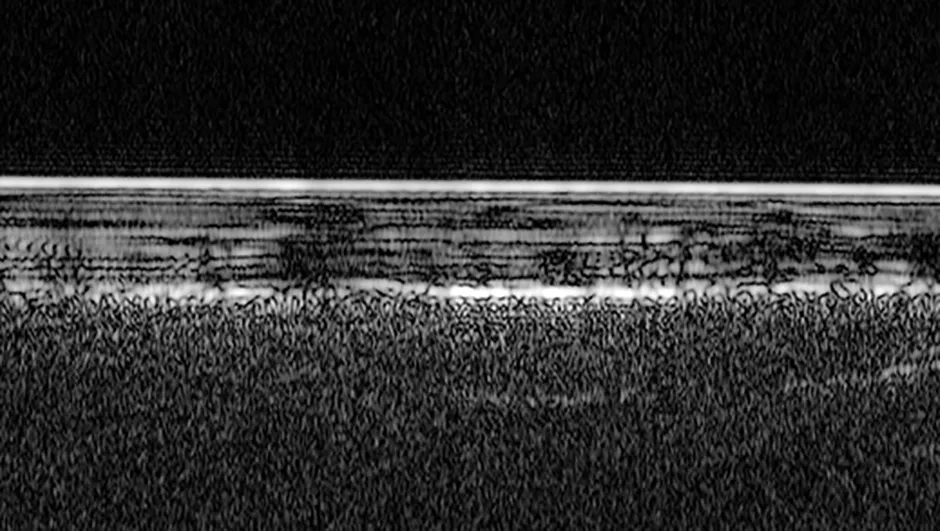Evidence has been found for a lake of liquid water buried under the surface of Mars.
The European Space Agency’s Mars Express orbiter made the discovery, which points to liquid water hidden under layers of subsurface ice and dust.
While evidence had already been found of water existing on the surface of the Red Planet in its ancient past, this new discovery, if true, would be the first time liquid water has been found on Mars.
The 15-year-old Mars Express mission had previously found that water ice exists at the planet’s poles.
For this latest discovery, scientists used the Mars Advanced Radar for Subsurface and Ionosphere Sounding instrument, MARSIS, to collect data.
The instrument works by sending radar pulses to the surface of Mars and then calculating how long it takes the signal to be reflected back, and with what strength.
These calculations can be used to map the subsurface topography of the Red Planet.

The investigation reveals that Mars’s south polar region consists of layers of ice and dust down to about 1.5km below the surface.
Underneath these deposits, a very bright radar reflection has been identified.
Analysing the reflected radar signals, scientists have concluded that this bright feature indicates an interface of ice and liquid water that may contain salty sediments.
If true, the detection would mean that the water patch is at least several tens of centimetres thick.
While this discovery could mean a lot for our understanding of the evolution of Mars, it also has implications for future human travel to the Red Planet.
“This subsurface anomaly on Mars has radar properties matching water or water-rich sediments,” says Roberto Orosei, principal investigator of the MARSIS experiment and lead author of the paper.
“This is just one small study area; it is an exciting prospect to think there could be more of these underground pockets of water elsewhere, yet to be discovered.”
